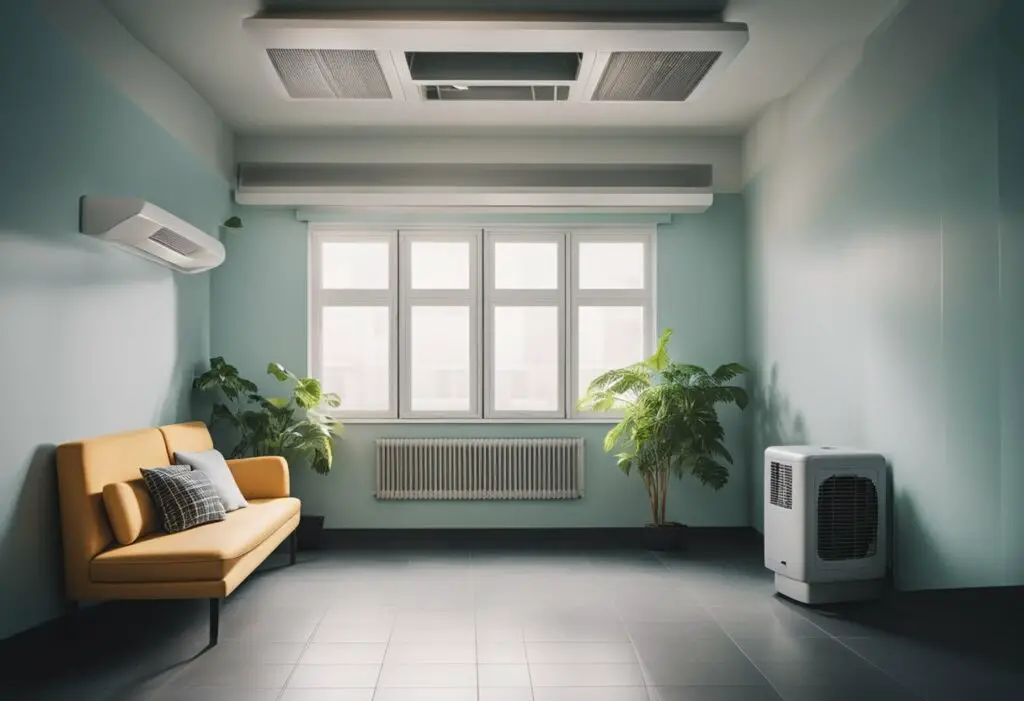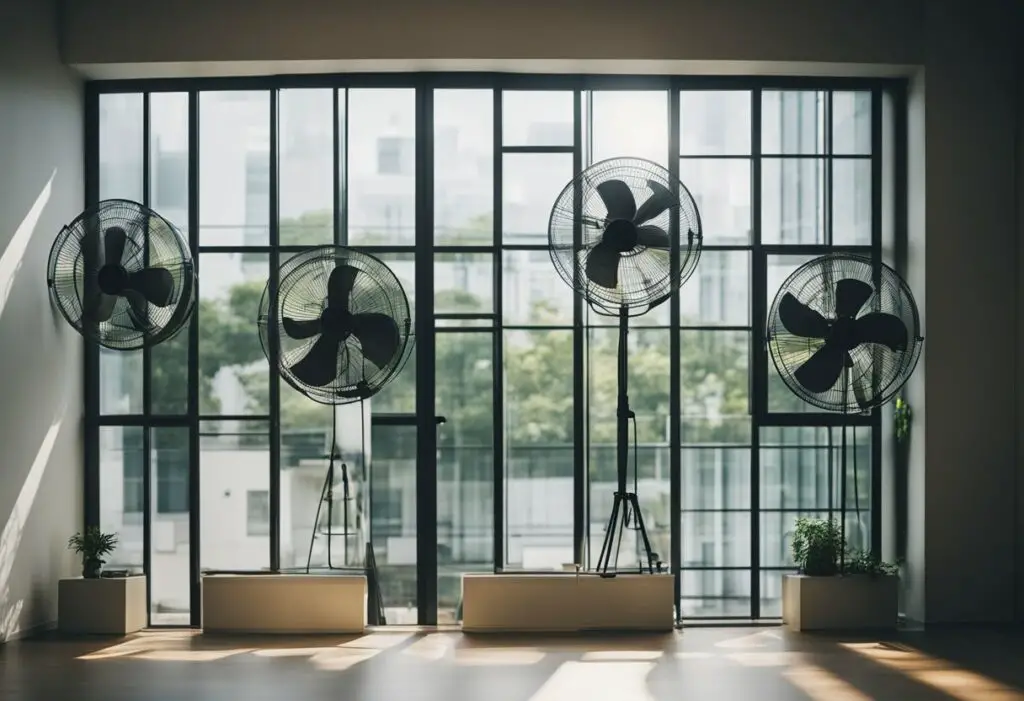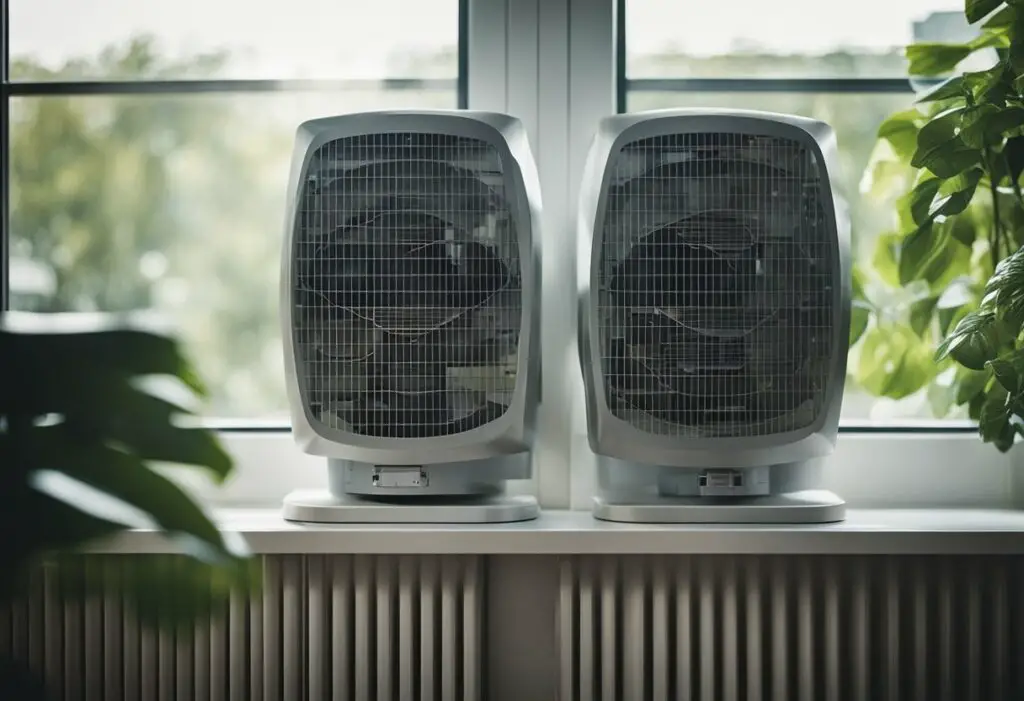Proper ventilation is an essential aspect of maintaining a fresh and odor-free environment in your home. Household odors can be caused by a variety of factors, including cooking, pets, and moisture, and can be unpleasant and even harmful to your health. Proper ventilation helps to eliminate these odors by circulating fresh air throughout your home and removing pollutants and contaminants.

Indoor air quality is a critical factor in maintaining a healthy and comfortable living environment. Poor indoor air quality can lead to a variety of health problems, including respiratory issues, allergies, and asthma. Proper ventilation is essential for improving indoor air quality by removing pollutants and contaminants from the air and ensuring that fresh, clean air is circulated throughout your home.
If you are struggling with household odors, proper ventilation is a simple and effective solution. By improving air circulation and removing pollutants and contaminants from the air, you can eliminate unpleasant odors and improve the overall air quality in your home. Whether you are cooking, entertaining guests, or simply relaxing at home, proper ventilation is an essential aspect of creating a clean, fresh, and healthy living environment.
Understanding Indoor Air Quality
When it comes to maintaining a healthy and odor-free home, understanding indoor air quality is essential. Poor indoor air quality can lead to a range of health problems, including respiratory issues, headaches, and allergies. In this section, we will explore the sources of indoor odors and the health impacts of poor air quality.
Sources of Indoor Odors
Indoor odors can come from a variety of sources, including cooking, pets, tobacco smoke, and mold. Other sources of indoor odors include cleaning products, building materials, and volatile organic compounds (VOCs). VOCs are chemicals that are released into the air from products such as paints, adhesives, and cleaning agents.
One way to eliminate indoor odors is to identify and eliminate the source of the odor. For example, if the odor is coming from cooking, make sure to use the kitchen exhaust fan. If the odor is coming from pets, make sure to clean their bedding and litter boxes regularly. If the odor is coming from mold, it is important to address the moisture problem that is causing the mold growth.
Health Impacts of Poor Air Quality
Poor indoor air quality can have significant health impacts. Exposure to indoor air pollutants such as mold, bacteria, and airborne viruses can lead to respiratory issues, headaches, and allergies. Poor indoor air quality can also exacerbate existing health conditions such as asthma and COPD.
To maintain good indoor air quality, it is important to control the sources of indoor air pollutants. This can be achieved through proper ventilation, which can help to remove pollutants and improve indoor air quality. Additionally, it is important to maintain a healthy humidity level in your home, as excessive humidity can lead to mold growth and other indoor air quality issues.
The EPA provides a reference guide to major indoor air pollutants in the home and additional information on how to improve indoor air quality. By understanding indoor air quality and taking steps to maintain a healthy home environment, you can help to eliminate household odors and improve your overall health.
Fundamentals of Home Ventilation
If you’re looking to eliminate household odors, proper ventilation is key. Ventilation helps circulate fresh air and remove stale air, which can contain unpleasant odors and other pollutants. In this section, we’ll cover the fundamentals of home ventilation and the two main types of ventilation techniques: natural ventilation and mechanical ventilation.
Natural Ventilation Techniques
Natural ventilation is the process of using natural air flow to circulate fresh air in your home. This can be achieved through a variety of techniques, such as opening windows and doors, using exhaust fans, and using air filters. One of the simplest ways to improve natural ventilation is to open windows and doors and let fresh air in.
Another technique is to use exhaust fans to help circulate air. Place a fan as close as possible to an open window blowing outside. This helps get rid of virus particles in your home by blowing air outside. Even without an open window, fans can improve air flow. Point fans away from people, as pointing fans toward people can blow contaminated air directly at them.
Air filters can also be used to remove pollutants and allergens from the air. Make sure to choose an air filter that is appropriate for your home’s size and needs.
Mechanical Ventilation Systems
Mechanical ventilation systems use fans and ductwork to circulate fresh air throughout your home. These systems can be either whole-house systems or localized systems, such as bathroom exhaust fans.
Whole-house ventilation systems use ductwork to distribute fresh air throughout your home. There are several types of whole-house ventilation systems, including heat recovery ventilators (HRVs) and energy recovery ventilators (ERVs). These systems help maintain healthy indoor humidity levels and improve indoor air quality.
Localized ventilation systems, such as bathroom exhaust fans, can help remove moisture and odors from specific areas of your home. Make sure to choose a fan that is appropriate for the size of the room.
Improving Ventilation to Reduce Odors

If you are looking to eliminate household odors, one of the most important things you can do is to improve ventilation in your home. Proper ventilation helps to remove stale and contaminated air, which can contribute to unpleasant odors. In this section, we’ll explore some strategies for improving ventilation in your home to reduce odors.
Strategic Use of Fans and Open Windows
One of the easiest ways to improve ventilation in your home is to use fans and open windows. Fans help to improve air flow and can help to remove stale air. You can place a fan as close as possible to an open window, blowing outside. This helps to get rid of virus particles in your home by blowing air outside. Even without an open window, fans can improve air flow. Point fans away from people, as pointing fans toward people can blow contaminated air directly at them.
Open windows also help to improve ventilation by bringing fresh air into your home. You should open windows on opposite sides of your home to create cross-ventilation. This helps to create a breeze that can help to remove stale air and odors.
Optimizing HVAC System for Odor Control
Another way to improve ventilation in your home is to optimize your HVAC system for odor control. HVAC systems play a crucial role in maintaining a controlled and odor-free environment in your home. You can optimize your HVAC system for odor control by:
- Air Filtration: HVAC systems use high-efficiency filters to remove particles, microorganisms, and contaminants from the air, which helps reduce odor-causing agents.
- Central Heating and Air Conditioning: Central heating and air conditioning systems help to circulate air throughout your home, which can help to remove stale air and odors.
- Kitchen Range Hoods: Installing a kitchen range hood helps to remove cooking odors from your home. Make sure your range hood is vented to the outside of your home.
- Bathroom Fans: Installing a bathroom fan helps to remove moisture and odors from your bathroom. Make sure your bathroom fan is vented to the outside of your home.
Regulations and Best Practices

Building Codes and Indoor Air Standards
When it comes to indoor air quality, building codes and indoor air standards play a crucial role in ensuring that the air you breathe is safe and healthy. These guidelines are designed to protect the occupants of buildings from exposure to harmful pollutants and other contaminants. Proper ventilation is an essential component of these guidelines, as it helps to maintain a healthy indoor environment.
To ensure that your building is up to code, it is essential to follow the regulations and best practices for ventilation. This includes proper operation and maintenance of your ventilation system, as well as ensuring that your building is airtight to prevent outdoor air pollutants from entering your indoor environment.
Energy Efficiency and Ventilation
While proper ventilation is essential for maintaining a healthy indoor environment, it can also impact the energy efficiency of your building. Airtightness is crucial for energy efficiency, but it can also limit the amount of outdoor air that enters your building. This can lead to a buildup of indoor air pollutants, which can negatively impact the health of the occupants.
To strike a balance between energy efficiency and ventilation, it is essential to follow the guidelines for airtightness while also ensuring that your ventilation system is properly designed and maintained. This includes regular inspections and cleaning of your ventilation system to ensure that it is working properly and efficiently.
By following these regulations and best practices, you can ensure that your building is safe, healthy, and energy-efficient. Proper ventilation is essential for maintaining a healthy indoor environment, and it is essential to follow the guidelines and best practices to ensure that your building is up to code and operating safely and efficiently.

